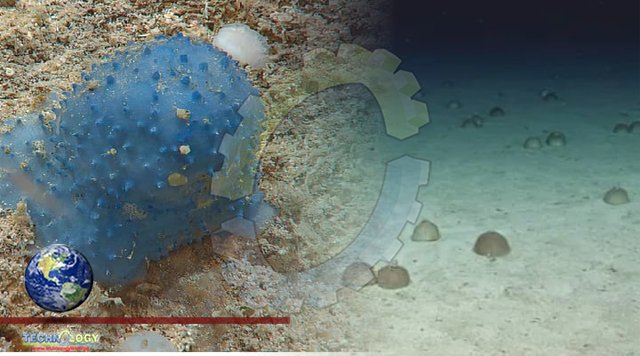Unidentified deep-sea “blue goo” creatures recently left scientists scratching their heads after they spotted the mysterious blobs hanging out on the seafloor in the Caribbean.

During a live stream of the expedition, team members discussed what the gloopy globules could be, but none of the researchers could come up with a definitive answer. Multiple blue goo creatures were sighted Aug. 30 by scientists controlling a remotely operated vehicle (ROV) near the seafloor surrounding St. Croix, one of the U.S. Virgin Islands. The mysterious blobs were discovered sitting motionless on the seafloor between 1,335 and 2,005 feet (407 and 611 meters) beneath the water’s surface. Researchers piloted the ROV from onboard the National Oceanic and Atmospheric Administration’s (NOAA) research vessel Okeanos Explorer, which has spent the last four months investigating sections of the North Atlantic as part of NOAA’s “Voyage to the Ridge 2022” exploration series.
As with every other dive during these expeditions, the footage was live streamed by NOAA for deep-sea enthusiasts from around the world to enjoy. During the live stream, researchers spotted and zoomed in on one of the unusual blue creatures and began discussing what it could be. Some observers noted that it was likely to either be a soft coral or sponge, and potentially even a tunicate – gelatinous marine invertebrates that are sometimes referred to as sea squirts. The team suggested a number of potential nicknames, including “bumpy blue thing”, “blue biomat”, and “blue goo”. The team will now begin the lengthy process of trying to identify the puzzling blue goo. In the live stream, the researchers said they would send images and videos from the dive to coral and sponge experts to see if they can identify the enigmatic blobs. This is no easy task, as there are around 2,000 species of soft corals, according to the World Register of Marine Species; around 8,500 species of sponges, according to NOAA; and around 3,000 species of tunicates, according to the Smithsonian Ocean Institute. If experts are unable to identify the species then “the mystery will remain until a sample can be collected,”The team thinks that this gooey mystery is the perfect example of what makes these expeditions so fun and important – for viewers and scientists alike.
Source: This news is originally published by sciencealert